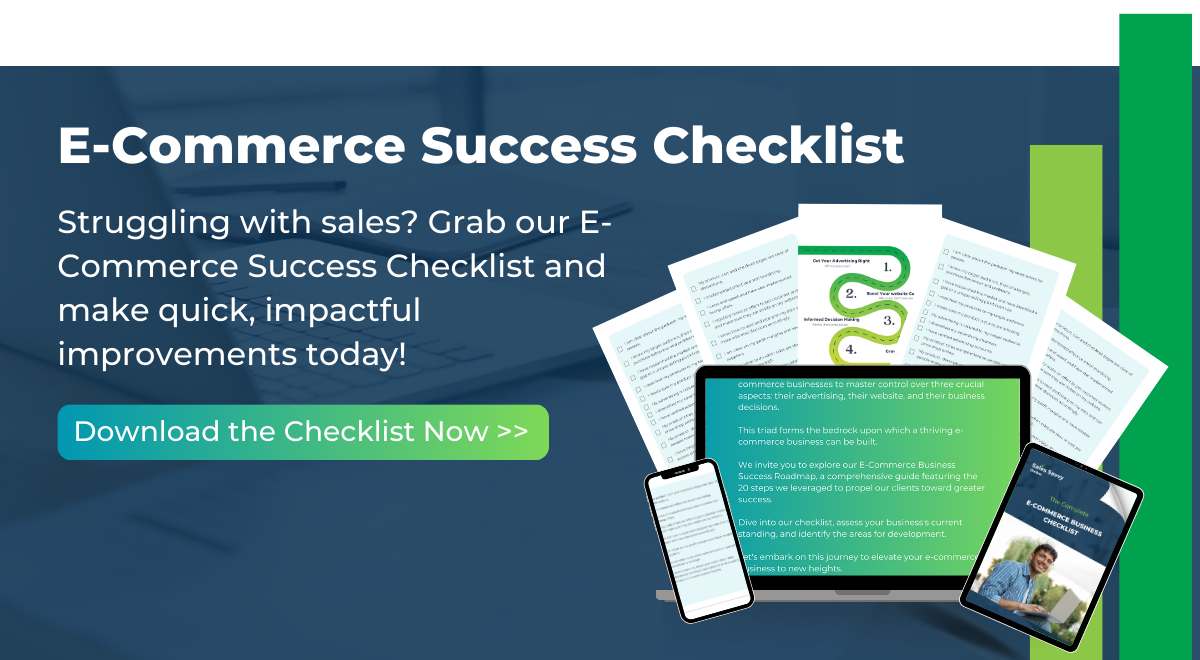Struggling with lost sales at checkout? This post shows how to optimise your ecommerce shopping cart for increased conversion rates. It covers streamlining your checkout process, enhancing user experience, and tackling shopping cart abandonment which all contribute to an improved user journey. Readers will learn techniques that make online shopping smoother and boost sales without extra hassle. By following these clear tips, you can ease customer frustration and improve conversion results, regardless of the market you are selling into.
Understanding the Importance of Ecommerce Shopping Carts
Online shopping carts boost conversion rates with smooth personalisation, easy payment processor setups, and strong fraud protection. This section offers practical tips for optimising your online store cart, ensuring each feature enhances user experience and drives better results.
The Role of Online Shopping Carts in Conversion Rates
An effective ecommerce shopping cart seamlessly tracks customer behaviour to automate routine tasks and handle customer support swiftly, which significantly improves the customer experience. This smart system ensures shoppers find the process easy and straightforward, positively impacting conversion rates and overall satisfaction.
Key Features That Influence User Experience
Good shopping cart software keeps friction low at checkout, which helps lower the cart abandonment rate and smooths out the buying process. The system works with trusted payment card industry standards and uses shift4shop to create a secure, hassle-free experience that makes buying online a breeze.
Streamlining the Checkout Process
This section covers reducing steps to complete a purchase, offering guest checkout options, and clear pricing with shipping information. It also explores upselling strategies to enhance your business model. By using php integrations with a robust payment gateway, an ecom cart can simplify the buying process and boost conversion rates effectively.
Reducing Steps to Complete a Purchase
A reduced steps process often means integrating a clear point of sale system that guides users seamlessly, whether they’re using an online cart shopping setup or browsing a trusted cart store online. Platforms such as weebly help create a streamlined cart online store experience that cuts down on unnecessary clicks, ensuring customers quickly complete purchases and enjoy a hassle-free checkout.
Offering Guest Checkout Options
The online shop cart works best when it allows guest checkout so customers can breeze through the process using mobile payment or a simple web browser interface. An easy-to-use online shopping cart optimises the customer journey on any cart for website, ensuring minimal delays and improved overall satisfaction. This smart approach addresses common checkout frustrations, making it easier for new ecommerce entrepreneurs to increase conversion rates.
Providing Clear Pricing and Shipping Information
Clear pricing and shipping details build trust by letting customers see exactly what they’re paying for, whether they’re using a shopping cart solution like woocommerce or choosing Shopify. This transparent approach benefits both online buyers and those familiar with brick and mortar stores, ensuring an effortless checkout experience on any ecommerce cart. By reducing uncertainty, the system helps increase customer satisfaction and encourages more conversions.
Enhancing User Experience Within Your Online Shopping Cart
Optimising an online shopping cart boosts revenue and customer satisfaction. This section covers designing an intuitive interface, applying mobile optimisation for better usability, and integrating secure payment options. Such expert insights help new e-commerce business owners succeed on platforms like bigcommerce, all while relying on a reliable web hosting service for a smooth checkout experience.
Designing an Intuitive Interface
An intuitive interface is crucial for smoothing the checkout process, making the payment journey as clear as possible for users. The expert view highlights that integrating straightforward navigation with strong data security measures, including pci standards, helps customers easily understand the concept of a secure and reliable online shop that strengthens the overall brand experience.
Implementing Mobile Optimisation
Optimising the ecommerce store for mobile app shoppers is key to ensuring every customer enjoys a smooth checkout, as a fast server response and reliable credit processing keep the buying process simple and stress-free. Expert insights reveal that a well-tuned mobile interface not only boosts conversion rates but also builds loyalty among users who appreciate a seamless experience on their mobile devices.
Integrating Secure Payment Options
Integrating secure payment options not only boosts the user experience but also caters to buyers using a mobile device, ensuring their payments are as smooth as their browsing, while also keeping an eye on the price. This setup lets entrepreneurs enjoy the benefits of a system that works seamlessly with platforms like google shopping and provides quick customer service for any shopping hitches.
Addressing Shopping Cart Abandonment
This section examines why shoppers drop out of a cart online shop, spotlighting issues like hidden fee shocks and weak encryption. It shows how apple pay and targeted advertising can re-engage browsers and explains how exit-intent popups prompt returns quickly and efficiently.
Identifying Common Causes of Abandonment
Insights show that shopper frustration often arises from confusing cart layouts and unexpected fees during online shopping, causing both mobile commerce users and miva merchants to quickly abandon their online cart. Simple tweaks in design and transparent pricing can transform the cart experience, leading to fewer dropouts and smoother checkouts.
Strategies to Re-Engage Abandoned Carts
Smart automation paired with targeted messaging brings hesitant consumers back to their carts without the usual fuss. By syncing with platforms like Prestashop, retail entrepreneurs boost scalability and keep the online experience smooth and engaging for every buyer.
Utilising Exit-Intent Popups Effectively
Exit-intent popups grab buyer attention by presenting a coupon that eases the checkout decision, especially when using a debit card or other payment card options. Experts suggest utilising custom css to craft a popup that blends seamlessly with online shopping carts, making the offer both visible and appealing. This smart tactic reduces abandonment, giving ecommerce entrepreneurs a direct way to boost conversions.
Leveraging Personalisation Features
Personalisation makes a shopping cart truly work. With features like recommending related products, tailoring offers based on user behaviour, and creating a personalised shopping experience, every email address collected and inventory option can boost cart shopping online. These tweaks deliver a friendly, efficient process that transforms each visit into a solid win.
Recommending Related Products
Recommending related products boosts conversion rates by using smart shopping cart solutions that tap into a comprehensive database to track every user’s shopping habits, ensuring that even an abandoned cart isn’t left behind long. By suggesting items that complement a customer’s selections, businesses can offer incentives like a free trial of premium features to enhance the buying experience, making the checkout process more engaging and effective.
Tailoring Offers Based on User Behavior
The method of tailoring offers using user behaviour allows ecommerce entrepreneurs to tap into valuable analytics and statistics, which guide them in creating customised deals that truly resonate with shoppers. By integrating rss feeds and leveraging a detailed directory of user activity, experts can apply their knowledge to refine promotions, ensuring the shopping cart experience remains seamless and conversion rates improve consistently.
Creating a Personalised Shopping Experience
Creating a personalised shopping experience means tailoring every interaction so that each customer feels uniquely valued, a strategy that works well when combined with effective email marketing and platforms like Magento. This approach for commerce systems sharpens carts by utilising updated cache data, ensuring that every visit is smooth and meets the expectations of today’s online shopper.
Tracking and Analysing Shopping Cart Performance
Analytics tools monitor user behaviour, check sales tax settings and maintain payment card industry data security standard compliance. Using a software as a service model helps entrepreneurs make data-driven improvements. A/B testing for cart elements further refines checkout processes, ensuring each tweak boosts conversion rates. This approach gives clear, practical insights to optimise every step of the online shopping journey.
Using Analytics Tools to Monitor User Behavior
Analytics tools help monitor shopper actions and provide clear insights into every interaction within the checkout process. By recording and analysing metrics like time spent on each page and drop-off points, experts adjust the shopping cart setup to reduce friction and improve sales. This steady tweak of design elements allows new ecommerce owners to create a smoother checkout experience that ultimately boosts conversion rates.
Making Data-Driven Improvements
Making data-driven improvements involves using real user data to pinpoint bottlenecks in your shopping cart that might be hindering conversion rates. By regularly analysing metrics and running A/B tests, entrepreneurs can fine-tune the checkout process, ensuring it meets customers’ needs and secures more completed purchases.
Setting Up a/B Testing for Cart Elements
Setting up A/B testing for cart elements allows entrepreneurs to measure what design tweaks work best at boosting conversion rates. This method involves comparing simple variations in checkout buttons or pricing layouts, so each adjustment clearly shows its impact on customer completion and overall sales.
Conclusion
Optimising your ecommerce shopping cart is essential for boosting conversion rates while delivering a smooth and secure shopping experience. Cutting down on checkout steps and offering personalised features make the buying process clear and customer-friendly. Transparent pricing, secure payment options, and effective re-engagement strategies help minimise dropouts. These clear improvements empower new ecommerce owners to drive more sales and build lasting customer trust. Want more on ecommerce trends? Read our full guide here.


